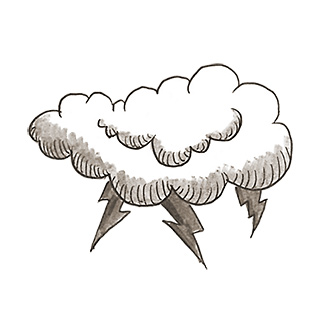
Related Questions
- How many wind turbines would it take to power all of New York City?
- What is “clean” coal?
- Why can’t fusion energy solve the global energy crisis?
- What happens to electricity when nothing is plugged into an outlet?
- Which engine is better at high altitude: diesel or gasoline?
- Can we calculate the efficiency of a natural photosynthesis process?
- Is it possible to construct a perpetual motion machine?
- Which is more likely to happen first: solar panels on every home, or giant solar power plants?
- What is a short circuit?
- Why do the products of a nuclear fission reaction in uranium have three neutrons but not three protons?
Can we use heat generated from an air conditioner or refrigerator?
Unfortunately, that waste heat isn't quite hot enough to be useful...
By Sarah JensenStroll down the sidewalk past a window-mounted air conditioner on an August afternoon and you’ll feel the heat. Place your hand at the back of the refrigerator, and you might imagine ways to stockpile the warmth to keep your house toasty come December. “The heat being discharged is only a few degrees warmer than the ambient temperature,” says Jacopo Buongiorno associate professor of nuclear science and engineering at MIT. “Unfortunately, at that low temperature, it is basically useless.”
According to the first and second laws of thermodynamics, it’s also an unavoidable byproduct of appliances like air conditioners and fridges. “The first law states that energy is neither created nor destroyed,” says Buongiorno. “If one joule of energy goes into a machine that operates steadily, one joule of energy must come out.” Refrigerators and air conditioners take in electricity to extract heat from orange juice and ice cream and sweltering living rooms, and that’s where the Second Law comes into play: The energy expelled in the form of waste heat has a lower utility than the original energy source.
“The sum of the heat extracted plus the work that went into the cooling process is discharged in the form of waste heat, and there must be a temperature difference between the machine and the ambient air in order to drive that heat out.” In the case of heat discharged by household appliances, that temperature difference is too low to be useful, and also the amount of heat discharged is low. Large power plants, on the other hand, may generate thousands of megawatts of waste heat, an enormous energy source. Some redirect that energy to power water desalination operations and algae farms for the production of synthetic fuel. One nuclear power facility in the Rhone Valley of France has even found a way to channel its waste heat to maintain a tropical park near its grounds. “The waste heat isn’t at a very high temperature, but it’s sufficient to keep the water warm enough so the crocodiles and alligators can live comfortably throughout the year,” says Buongiorno.
A great deal of waste heat is required for such efforts, much more than is generated by the refrigerator in your kitchen. And since waste heat is a given, the best we can do is use the most energy-efficient appliances possible. It’s the job of mechanical engineers to design the next generation of cooling devices that employ more efficient heat exchangers and circulation systems. “If the discharged heat was even closer to ambient temperature, the appliance would be more efficient and energy loss would be minimized,” says Buongiorno.
Thanks to Harshit Juneja of New Delhi for this question.
Posted: November 12, 2013